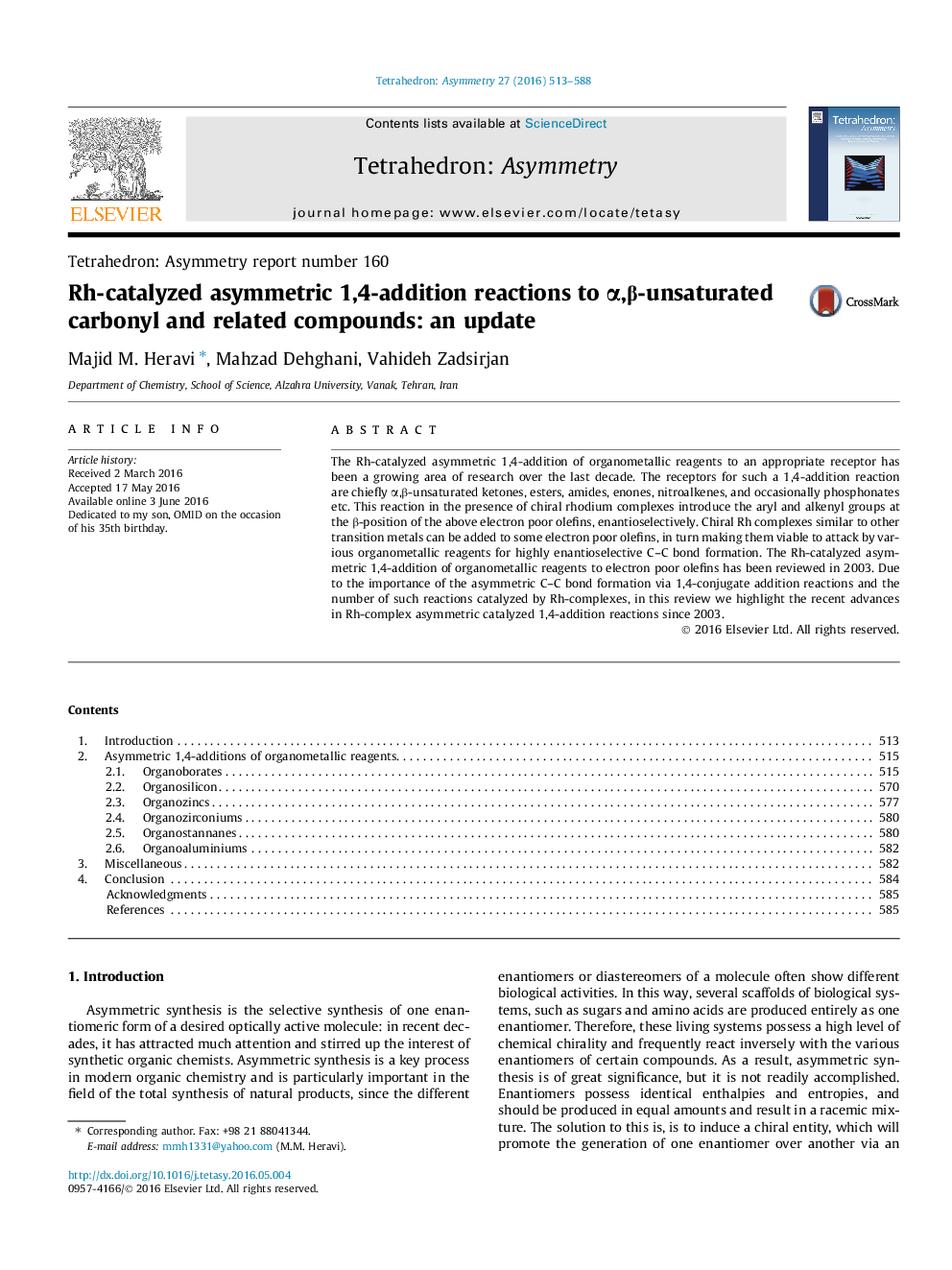| کد مقاله | کد نشریه | سال انتشار | مقاله انگلیسی | نسخه تمام متن |
|---|---|---|---|---|
| 1343386 | 979995 | 2016 | 76 صفحه PDF | دانلود رایگان |

The Rh-catalyzed asymmetric 1,4-addition of organometallic reagents to an appropriate receptor has been a growing area of research over the last decade. The receptors for such a 1,4-addition reaction are chiefly α,β-unsaturated ketones, esters, amides, enones, nitroalkenes, and occasionally phosphonates etc. This reaction in the presence of chiral rhodium complexes introduce the aryl and alkenyl groups at the β-position of the above electron poor olefins, enantioselectively. Chiral Rh complexes similar to other transition metals can be added to some electron poor olefins, in turn making them viable to attack by various organometallic reagents for highly enantioselective C–C bond formation. The Rh-catalyzed asymmetric 1,4-addition of organometallic reagents to electron poor olefins has been reviewed in 2003. Due to the importance of the asymmetric C–C bond formation via 1,4-conjugate addition reactions and the number of such reactions catalyzed by Rh-complexes, in this review we highlight the recent advances in Rh-complex asymmetric catalyzed 1,4-addition reactions since 2003.
In this review, we try to highlight the recent advances in Rh-catalyzed asymmetric 1,4-conjugate addition reactions to α,β-unsaturated carbonyl and related compounds.Figure optionsDownload as PowerPoint slide
Journal: Tetrahedron: Asymmetry - Volume 27, Issue 13, 15 July 2016, Pages 513–588